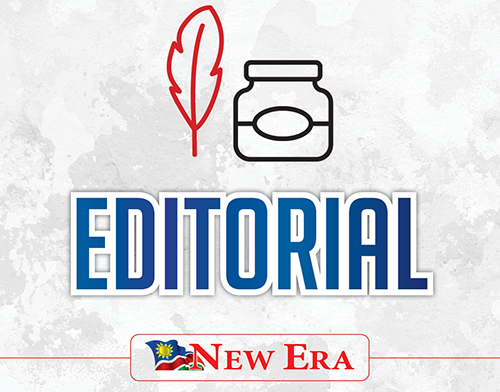Civil rights icon Martin Luther King Jr once said: “Injustice anywhere is a threat to justice everywhere. We are caught in an inescapable network of mutuality, tied in a single garment of destiny. Whatever affects one directly, affects all indirectly.”
This week, his words reverberated in the Namibian courts, particularly in the battle over the Veterinary Cordon Fence (VCF), also known as the red line.
The red line does not only physically divide Namibians in the south from those in the north of it; it has also divided public opinion too.
At first glance, it might be observed that each opinion carries with it some weight and substance. However, at closer look, it is mostly driven by groups from two extremes, with no middle ground for compromise or reason.
In some quarters, the fence is seen as a necessary tool for controlling the spread of animal diseases, safeguarding the southern commercial farming sector’s access to lucrative beef markets in the EU.
Yet, for many people living north of the line, it represents a lingering colonial legacy that divides the country into two economic zones: a well-connected and profitable south and a marginalised and economically deprived north. It is a stark reminder that the promises of equality post-independence have yet to be fully realised for those most affected by this structural barrier.
Former justice minister Sacky Shanghala perhaps provided the nation with Exhibit A of how the interests of a few have been placed ahead of those of the majority, in some instances.
When subpoenaed to testify in court on the red line as former justice minister and former Law Reform Commission chairperson, Shanghala was reluctant to do so, saying the removal of the fence would have direct implications on his farming operations in Omaheke region and thereby he was conflicted. It could be deduced from Shanghala’s reasoning that some people in positions of power and influence will ensure that anything that hurts or threatens their business interests never sees the light of day.
For some people, the redline is an animal disease control mechanism, but for others, it is an oppressive political and colonial tool that deprives Namibians from the north of it equal economic and social opportunities with Namibians in the south of the fence.
The debate, however, isn’t just an economic or political one as certain sections of society would argue.
As President-elect Netumbo Nandi-Ndaitwah observed back in 2023, Namibia cannot continue to function with two distinct economies.
This duality undermines the country’s unity and reinforces the sense of injustice, making it harder for Namibians to see themselves as equals in a nation that should belong to them all.
“The challenge that we’re having with the red line is [that it is] for animal disease control. However, it is definitely not a good thing to have two economies in one country. Nevertheless, that is the situation we are finding ourselves in. That is why we are saying, we must try to make sure we have a market for the northern communal areas (NCAs),” she said at the time.
Despite the challenges, farmers in the NCAs (north of the red line) have managed to survive and weather the storm.
The NCAs cover parts of Kunene, Omusati, Oshana, Ohangwena, Oshikoto, Kavango West, Kavango East and Zambezi regions.
There are an estimated 1.5 million cattle in the NCAs. The areas, however, do not have access to the lucrative beef markets in the EU, which are currently reserved for cattle coming from the south of the red line.
Therefore, while the red line debate can be argued from two extremes, there has been a need for a Namibian solution to it.
It is true that the red line’s oppression manifests itself in various ways. When those north of the cordon fence slaughter livestock for personal consumption, they cannot carry the meat south of the red line as it is believed to be infested with diseases and infections that threaten the lucrative beef market for the southern part of the fence.
The consequence of this is that this section of the country’s population is subjected to buying basic food supplies at exorbitant prices south of the red line, to feed their families, when they can bring cheaper alternatives from the north.
The red line transcends beyond livestock, trade, and consumption. It is about dignity and justice. It is about survival.


